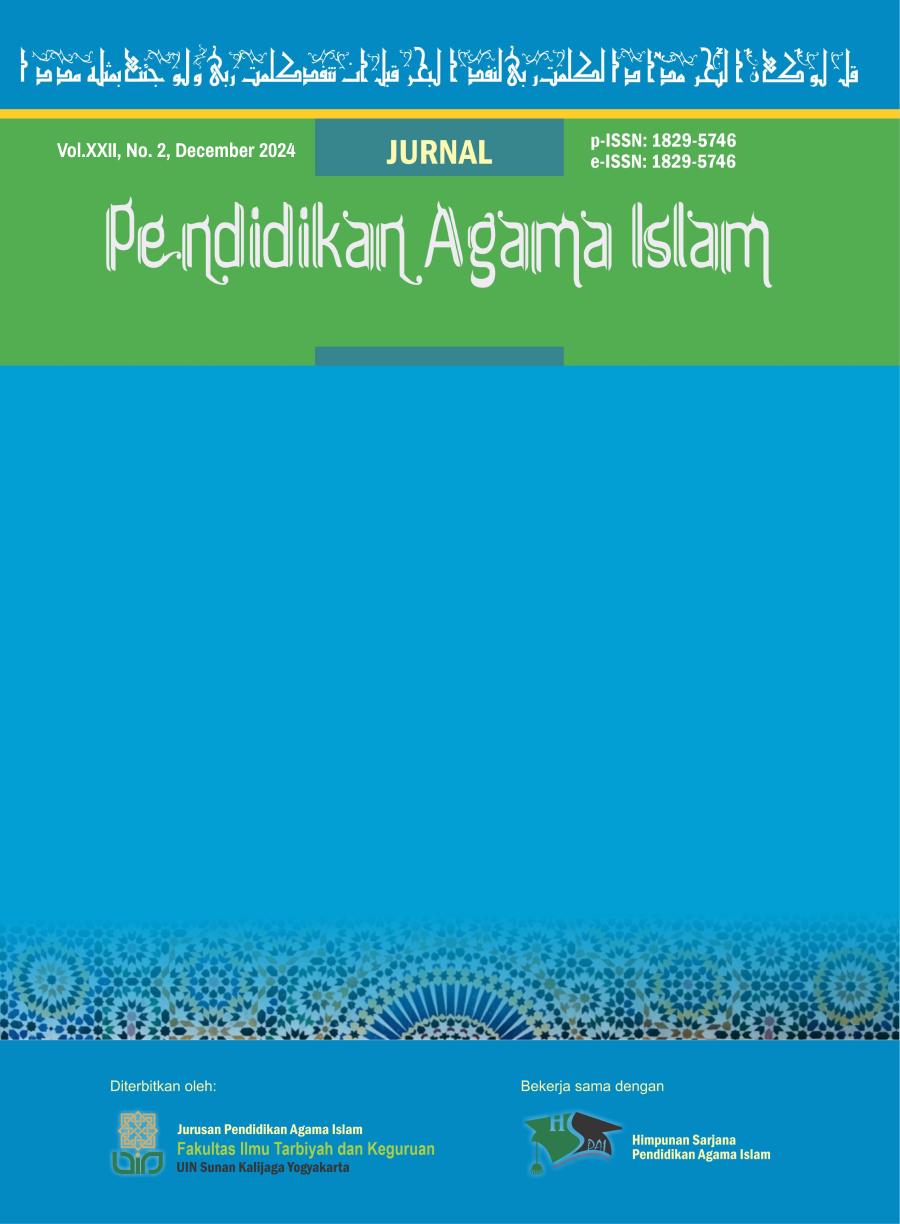From Dialogue to Engagement: Experiences of Civil Society Organizations in Religious Literacy Programs for Multicultural Education Curriculum in Indonesia
##plugins.themes.bootstrap3.article.main##
Abstract
Purpose – The purpose of this research is to learn about civil society organizations' experiences in cross-cultural religious literacy programs and what should be done to maintain harmonious, non-conflictual relations between people of different religions and beliefs
Design/methods/approach – This study was conducted to explore in-depth information about the experiences of civil society organizations (CSOs) in cross-cultural religious literacy programs. One of the CSOs in Indonesia mentioned in this research is the Leimena Institute, which shares its experience in various literacy activities, including cross-cultural literacy. The purpose of this study is to learn about the experience of civil society organizations in cross-cultural religious literacy programs, not to mention to find out what should be done to maintain harmonious-non-conflictual relations between people of religion and belief. The data for this qualitative research was taken from related documents.
Findings – There are international interfaith documents that speak of the importance of building togetherness in organizing life for the better. The dialog process is one of the efforts that can be carried out to allow the spread of the spirit of cross-cultural religious literacy, to bring up a multicultural-multireligious education curriculum.
Research implications/limitations – This research has theoretical and ideological implications for producing educational innovation. The efforts made by the Islamic community and the international community have a positive impact on efforts to build a broad educational network. As a result, the predictions of future education that is multicultural and multireligious will be able to be faced calmly and fully prepared
Originality/value – This research illustrates how dialogues will build good engagement and produce significant changes in the world of education towards a multicultural-multireligious future education
Keywords:
Downloads
##plugins.themes.bootstrap3.article.details##
Copyright

This work is licensed under a Creative Commons Attribution-ShareAlike 4.0 International License.
Copyright Notice
Authors who publish with this journal agree to the following terms:
- Authors retain copyright and grant the journal right of first publication with the work simultaneously licensed under a Creative Commons Attribution License that allows others to share the work with an acknowledgement of the work's authorship and initial publication in this journal.
- Authors are able to enter into separate, additional contractual arrangements for the non-exclusive distribution of the journal's published version of the work (e.g., post it to an institutional repository or publish it in a book), with an acknowledgement of its initial publication in this journal.
- Authors are permitted and encouraged to post their work online (e.g., in institutional repositories or on their website) prior to and during the submission process, as it can lead to productive exchanges, as well as earlier and greater citation of published work.
References
Declaration, A. D. (2019). Abu Dhabi Declaration or Document on Human Fraternity for World Peace and Living Together.
Declaration, M. (2016). Marrakesh Declaration on the Rights of Religious Minorities in Predominantly Muslim Majority Communities.
El-Ansary, W. (2019). Kata Bersama. Antara Muslim dan Kristen. Gadjah Mada Press.
El-Ansary, W., & David K. Linnan. (2010). Muslim and Christian Understanding. Theory and Application of “A Common Word.” Palgrave Macmillan.
Esposito, J., & Mogahed, D. (2007). Who Speaks for Islam. What Over a Billion Muslim Really Think. Gallup Press.
Goma’a, A. (2010). A Common Word Between Us and You: Motives and Applications. In Muslim and Christian Understanding: Theory and Application of “A Common Word". Palgrave Macmillon.
Hoover, C. S. and D. R. (2021). A Case for Cross-Cultural Religious Literacy. The Review of Faith and International Affairs, 19(1). https://doi.org/https:doi.org/10.1080/15570274.2021.1874165
League, M. W. (2019). The Charter of Makkah, Makkah al-Mukarramah.
Leimena, I. (2023). Literasi Keagamaan Lintas Budaya. Anda, Mereka, dan Apa yang Dapat dilakukan Bersama. Perkumpulan Institut Leimena.
Leimena Institute. (n.d.). Pendekatan Baru Bagaimana Menjalin Hubungan Antar Penganut Agama-Agama Dunia. Leimena Institute.
Markus, S. (2016). Dunia Barat dan Islam. Visi Ulang Kemanusiaan Universal (2nd ed.). Gramedia Pustaka.
Marrakesh, I. (2016). I’lanu Marrakesh lii al-Aqalliyyat al-Diniyyah fii al-‘Alam al-Islamy. al-Ithar al-Syar’iy wa al-Dakwah ila al-Mubadarah.
Nation, U. (2011). UN Human Rights Council Resolution 16/18.
Nation, U. (2018). UN General Assembly Resolution 73/128.
Nation, U. (2023). UN General Assembly Resolution 78/214.
The Royal Aal Al-Bayt Institute for Islamic Thought. (2009). A Common Word Between Us and You.
Thought, T. R. A. A. B. I. for I. (2009). The Amman Message. he Royal Aal Al Bayt Institute for Islamic Thought.
Unesco. (2021). Report From the International Commission on the Futures of Education.
Zakaria, F. (2015). In Defense of a Liberal Education. W.W.Norton & Company Ltd.
129
Views
102
Downloads





